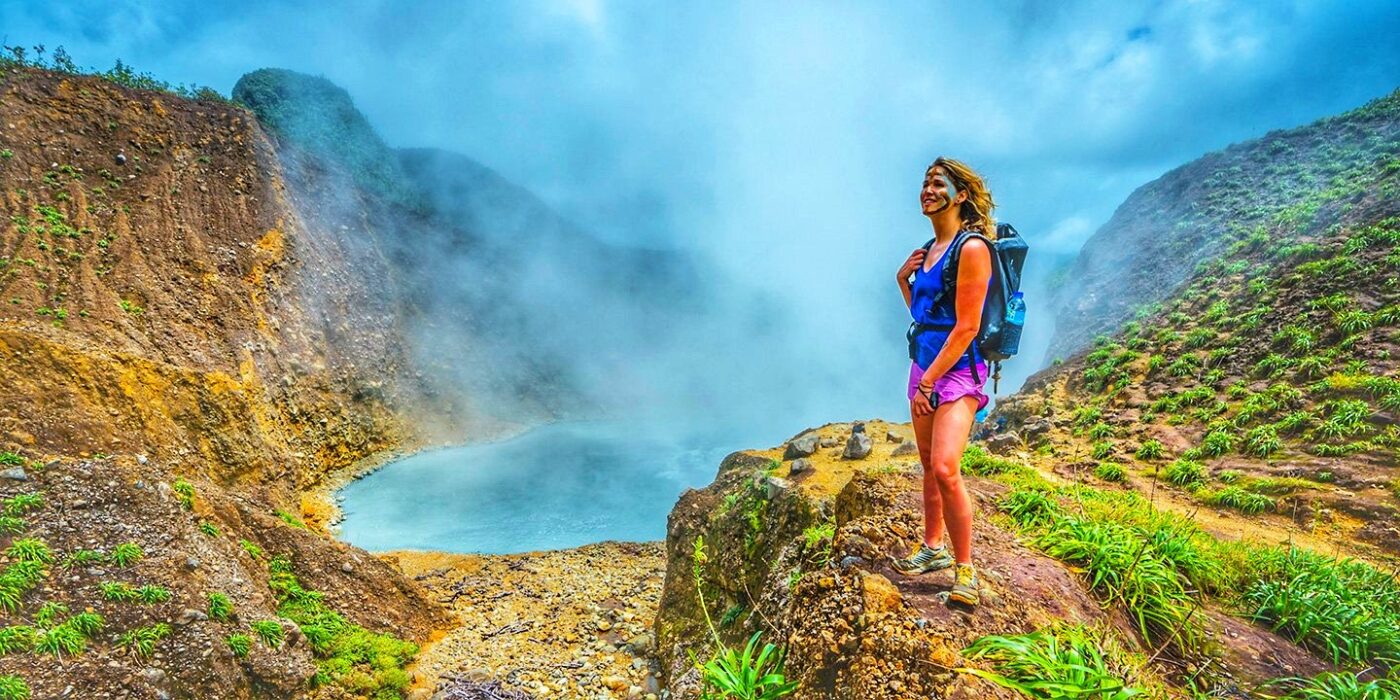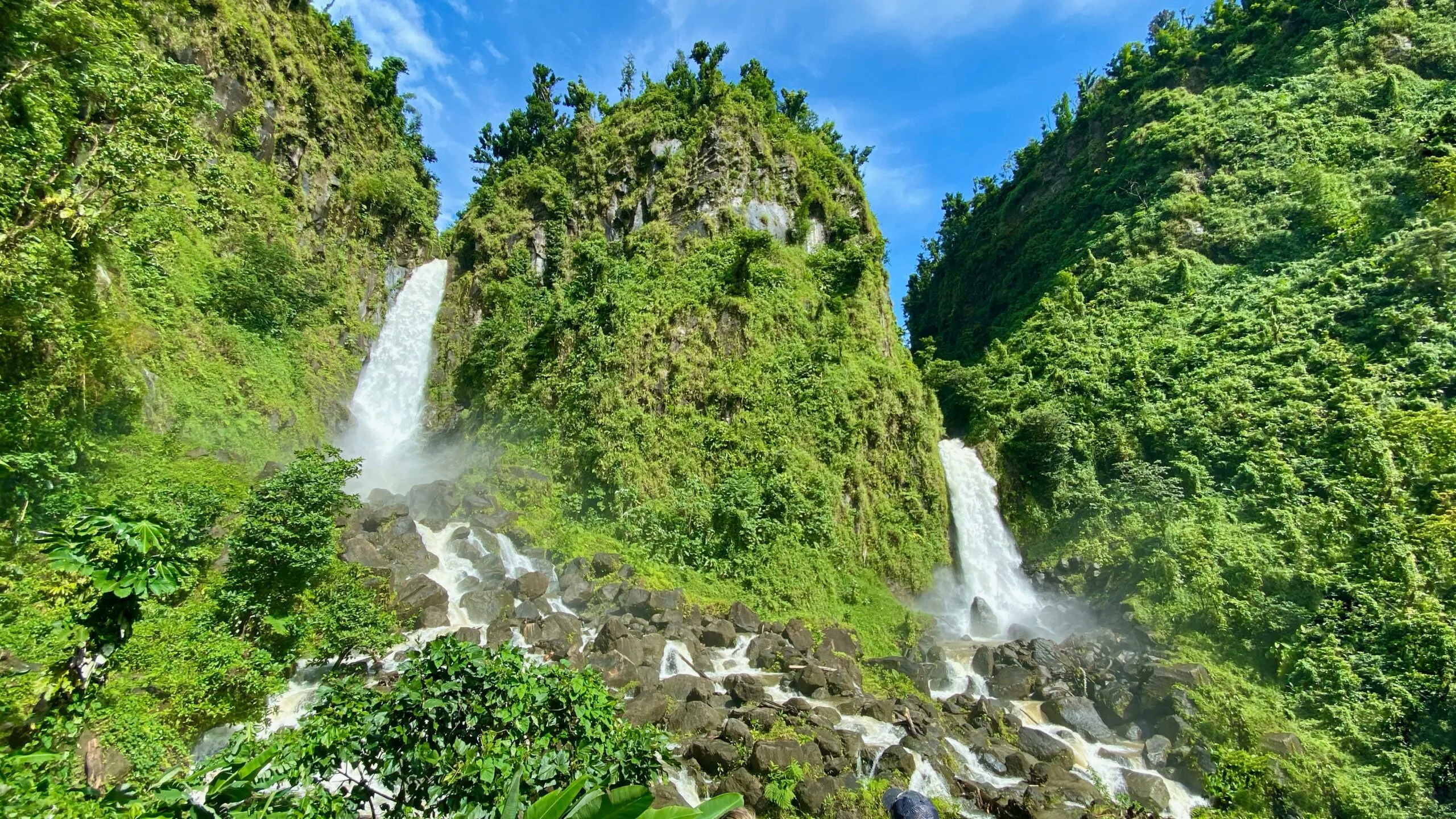Dominica, often called the “Nature Island,” is one of the Caribbean’s most stunning yet overlooked treasures. Nestled between Guadeloupe and Martinique, Dominica offers an authentic Caribbean experience without the crowds that plague more popular destinations. This volcanic island paradise boasts lush rainforests, majestic waterfalls, natural hot springs, and a vibrant local culture that make it a perfect destination for adventure seekers and nature lovers alike. If you’re searching for an off-the-beaten-path experience in the Caribbean, Dominica should be at the top of your travel bucket list.
Why Dominica Should Be Your Next Caribbean Adventure
Dominica stands apart from typical Caribbean destinations. While many islands focus on white-sand beaches and resort experiences, Dominica’s appeal lies in its unspoiled natural beauty and authentic cultural experiences. The island’s rugged volcanic landscape has protected it from mass tourism, preserving its pristine environment and allowing visitors to experience the Caribbean as it once was.
With 365 rivers, countless waterfalls, the world’s second-largest boiling lake, and vibrant marine life, Dominica offers adventures that simply can’t be found on more developed islands. The absence of international chains and mega-resorts means your tourism dollars directly support local businesses and communities.
1. Explore Dominica’s Breathtaking Waterfalls and Natural Pools
Dominica is home to some of the most spectacular waterfalls in the Caribbean, each offering unique experiences and scenic beauty. Trafalgar Falls, known locally as the “Twin Falls,” features two magnificent cascades side by side – the “father” (85 meters) and the “mother” (40 meters). A short 15-minute hike from the visitor center leads to viewing platforms, but adventurous travelers can carefully navigate the boulders to reach the natural hot springs and pools at the base.
Emerald Pool, located in the Morne Trois Pitons National Park, is a natural swimming hole beneath a 12-meter waterfall. The pool’s striking emerald color comes from the reflection of surrounding vegetation, creating a magical atmosphere that feels straight out of a fairy tale. The easy access trail makes it perfect for visitors of all fitness levels.
For those seeking more secluded experiences, Victoria Falls (not to be confused with its African namesake) rewards hikers with a dramatic 52-meter cascade that plunges into a warm, mineral-rich pool perfect for soaking tired muscles after the moderate 45-minute hike.
 Trafalgar Falls – The spectacular twin waterfalls are among Dominica’s most visited natural attractions
Trafalgar Falls – The spectacular twin waterfalls are among Dominica’s most visited natural attractions
2. Hike Dominica’s World-Class Trails and Rainforests
Dominica is a hiker’s paradise, with trails ranging from easy walks to challenging multi-day treks. The crown jewel of Dominica’s hiking experiences is the Waitukubuli National Trail, the Caribbean’s first long-distance hiking trail. Spanning 185 kilometers from the southern tip of the island to the northern peninsula, the trail is divided into 14 segments, allowing hikers to choose day treks or commit to the full two-week journey through Dominica’s most breathtaking landscapes.
The hike to Boiling Lake, located in the Morne Trois Pitons National Park, is considered Dominica’s most challenging but rewarding day hike. This strenuous 8-hour round trip takes you through the Valley of Desolation, a lunar-like landscape of steam vents and bubbling mud pots, before reaching the world’s second-largest boiling lake – a flooded fumarole with water temperatures reaching 92°C at the edges.
For a gentler experience, the Syndicate Nature Trail in the northern rainforest offers an easy 45-minute loop with excellent birdwatching opportunities, including the chance to spot Dominica’s two endemic parrot species: the Imperial (Sisserou) and Red-necked (Jaco) parrots.
 Dominica’s hiking trails offer adventurers stunning views of the island’s lush landscapes
Dominica’s hiking trails offer adventurers stunning views of the island’s lush landscapes
3. Discover Dominica’s Unique Volcanic Wonders
Dominica’s volcanic origins have blessed the island with unique geological features found nowhere else in the Caribbean. The Champagne Reef, located in the southwest of the island, offers one of the world’s most unusual snorkeling experiences. Underwater geothermal springs release bubbles of warm gas that rise to the surface, creating the sensation of swimming in a glass of champagne while exploring vibrant coral formations and abundant marine life.
Morne Trois Pitons National Park, a UNESCO World Heritage Site, showcases Dominica’s volcanic heart with its craggy mountains, steaming valleys, and freshwater lakes. The park’s centerpiece, Boiling Lake, sits in a natural cauldron where water is kept in a constant state of boiling by the heat of magma chambers below.
For a more accessible volcanic experience, visit the Wotten Waven Sulphur Springs, where natural hot springs have been developed into rustic spas. Here, you can soak in mineral-rich pools of varying temperatures, apply therapeutic mud masks, and enjoy natural steam rooms in a jungle setting.
4. Experience Dominica’s Vibrant Indigenous Culture
Dominica is home to the Caribbean’s last remaining pre-Columbian population, the Kalinago people (formerly known as Caribs). The Kalinago Territory, a 3,700-acre reserve on the eastern coast, offers visitors a unique opportunity to learn about indigenous Caribbean culture and traditions that have survived for centuries.
At the Kalinago Barana Autê Cultural Village, visitors can explore traditional structures, watch demonstrations of basket weaving and canoe building, and learn about medicinal plant use. Cultural performances showcase traditional dance and music, while the on-site craft shop offers authentic handmade souvenirs that support the local community.
Don’t miss the chance to sample traditional Kalinago cuisine, including dishes like “rouyou” (rolled cassava bread) and “toulouma” (a hearty fish and taro stew), which provide insight into pre-colonial Caribbean food traditions.
5. Dive into Dominica’s Spectacular Marine World
While Dominica may not be known for sprawling white-sand beaches, its underwater world rivals the most famous dive destinations on the planet. The island’s dramatic topography extends beneath the waves, with sheer drop-offs, volcanic vents, and pristine coral reefs teeming with marine life.
Scotts Head Pinnacle, at the southern tip of the island where the Caribbean Sea meets the Atlantic Ocean, offers divers the unique experience of seeing two distinct marine ecosystems in a single dive. The sheltered western “Caribbean” side features gentle currents and tropical reef fish, while the eastern “Atlantic” side hosts larger pelagic species in stronger currents.
Dominica is also known as the “Whale Watching Capital of the Caribbean,” with a 98% success rate for spotting sperm whales year-round. Unlike seasonal whale watching elsewhere, Dominica hosts a resident pod of female sperm whales and their calves, offering consistent opportunities to observe these magnificent creatures in their natural habitat.
6. Rejuvenate in Dominica’s Natural Hot Springs and Spas
Dominica’s volcanic activity has blessed the island with numerous natural hot springs and mineral-rich waters perfect for relaxation and wellness. After days of hiking and adventure, nothing feels better than soaking in these therapeutic waters surrounded by rainforest.
Wotten Waven, known locally as the “Valley of Wellness,” features several rustic spas offering hot mineral baths, mud pools, and natural steam rooms. Ti Kwen Glo Cho Natural Hot Springs provides private pools of varying temperatures surrounded by tropical gardens, while Screws Sulphur Spa offers mud therapy alongside its mineral baths.
For a truly unique experience, visit the natural hot springs at Trafalgar Falls, where hot water seeps between massive boulders, creating natural jacuzzis beside the cool river flowing from the waterfall. The contrast between hot and cold waters makes for an invigorating natural therapy experience.
7. Savor Dominica’s Farm-to-Table Cuisine and Local Delicacies
Dominica’s fertile volcanic soil and abundant rainfall create perfect conditions for agriculture, resulting in a vibrant food scene centered around fresh, local ingredients. The island’s cuisine blends African, European, and indigenous Kalinago influences, creating distinctive flavors unlike anywhere else in the Caribbean.
Must-try local specialties include “mountain chicken” (actually a delicacy of frog legs), callaloo soup (made with dasheen leaves), and “titiwi” (tiny river fish served with green figs and plantains). Dominica is also famous for its root crops like dasheen, yams, and sweet potatoes, often served alongside freshly caught seafood.
For an authentic taste experience, visit the Roseau Market on Saturday mornings, where farmers bring produce from across the island. Sample local fruits like soursop, sugar apple, and passion fruit, or try roadside vendors selling “bakes” (fried bread) with salt fish or cocoa tea.
Planning Your Visit to Dominica
When to Visit
The best time to visit Dominica is during the dry season from December to April when rainfall is minimal and temperatures hover comfortably between 25-30°C (77-86°F). This period offers ideal conditions for hiking and outdoor adventures.
The wet season (June to November) brings more rainfall and humidity but offers benefits including lush landscapes, fuller waterfalls, and lower prices. However, this period coincides with the hurricane season, so travel insurance is recommended.
Getting There
While Dominica doesn’t have an international airport for long-haul flights, it’s accessible via connecting flights from regional hubs including Barbados, Antigua, and Puerto Rico. The main airport is Douglas-Charles Airport (DOM) on the northeast coast, about an hour’s drive from the capital city of Roseau.
Ferry services are available from neighboring islands including Guadeloupe, Martinique, and St. Lucia, offering a scenic alternative for travelers island-hopping through the Caribbean.
Where to Stay
Dominica offers accommodation options ranging from eco-lodges and boutique hotels to vacation rentals and guesthouses. For luxury eco-conscious travelers, properties like Secret Bay and Jungle Bay offer world-class amenities with minimal environmental impact.
Mid-range options include Fort Young Hotel in Roseau and Tamarind Tree Hotel near Calibishie, while budget travelers can find excellent value at guesthouses like Cocoa Cottages in Trafalgar or Seaworld Guesthouse in Roseau.
Getting Around
Renting a car provides the most flexibility for exploring Dominica, though the mountainous terrain and left-side driving may challenge some visitors. Minibuses serve the main routes between towns but run infrequently to remote areas.
For those uncomfortable driving, hiring local guides with vehicles is an excellent option, providing transportation and valuable local knowledge about the island’s natural and cultural attractions.
Experience the Authentic Caribbean in Dominica
Dominica offers what many travelers seek but rarely find: an authentic, unspoiled destination where nature takes center stage. Unlike many Caribbean islands transformed by mass tourism, Dominica retains its natural character and cultural integrity while providing comfortable accommodations and memorable experiences for visitors.
Whether you’re hiking to a boiling lake, swimming in waterfall pools, relaxing in natural hot springs, or connecting with indigenous culture, Dominica delivers experiences that can’t be found elsewhere in the region. For travelers seeking meaningful adventures beyond the typical beach vacation, Dominica truly is the Caribbean’s hidden paradise waiting to be discovered.
:max_bytes(150000):strip_icc()/TAL-Things-To-Do-DOMINICA0123-5c351d89645b4c7eb5f361eccc372a02.jpg) Dominica’s lush landscapes and pristine nature provide a refreshing alternative to typical Caribbean destinations
Dominica’s lush landscapes and pristine nature provide a refreshing alternative to typical Caribbean destinations

Leave a Reply